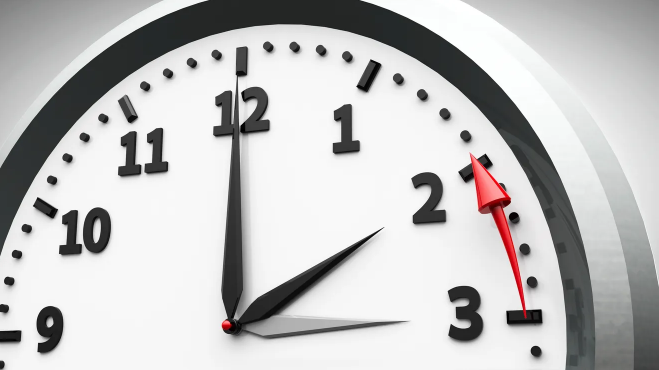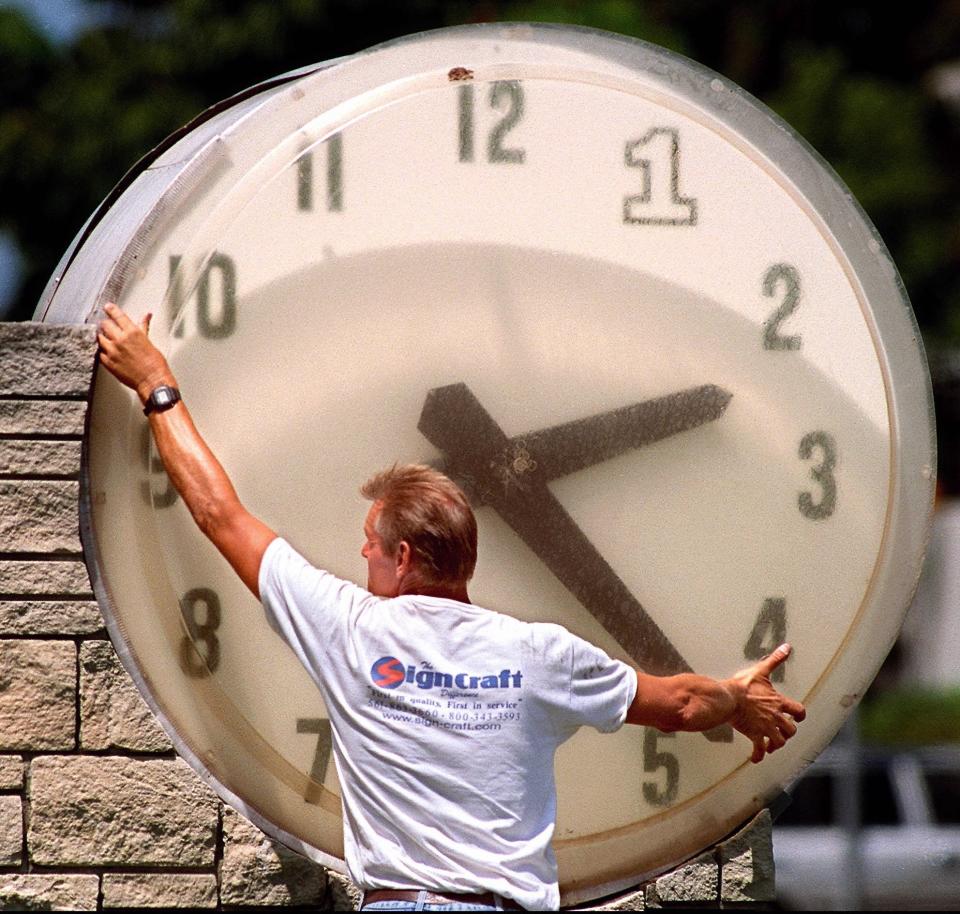When does daylight saving time 2023 end and plunge us into early darkness?
Daylight saving time ends Sunday, Nov. 5.
Clocks will fall back one hour at 2 a.m. As we inch closer to the impending time change, the sun will start setting just after 6:30 p.m. After the time change in West Palm Beach, the sun will begin setting at 5:34 p.m. It inches earlier to 5:26 p.m. in late November and early December.
The shortest day of the year is the winter solstice on Dec. 21 when there are just 10 hours, 27 minutes and 44 seconds between sunrise and sunset, according to the website TimeandDate.com.
The daylight saving time discussion — the annual annoyance or optimism that comes with moving clocks one hour forward at 2 a.m. — has raged for decades in the U.S., spawning unusual alliances between powerful lobbies in favor and against tampering with Father Time.
When does the time change? Florida turns clocks back on Nov. 5, 2023 to end daylight saving time
The Energy Policy Act of 2005 extended the length of daylight saving time to eight months, from the second Sunday in March to the first Sunday in November. It went into effect in 2007.
But one thing is clear in all machinations and manipulations to spring forward or fall back over the years: daylight saving time was not created to benefit farmers.
We are still doing daylight saving time, but it's not because of farmers
Michael Downing, the author of the 2006 book “Spring Forward: The Annual Madness of Daylight Savings Time,” said it’s a persistent belief in the U.S. that farmers wanted the earlier start time, but, in fact, they fought it pitchfork and scythe, even taking their opposition all the way to the Supreme Court in the 1920s.
Farmers disliked daylight saving time because they needed the sun to dry the dew from their crops before they could harvest and go to market. With the sun rising an hour later, they argued they were having to wait too long to pick their produce.
At the same time, cows didn’t follow man’s clock. They needed to be milked every 12 hours and daylight saving time meant the farmer who once woke at sunrise to milk, now had to be up in the dark, using artificial light.
So who DID benefit from the new time change in 1918?
“The whole proposition that we lose or gain an hour is, at best, philosophical, what are we talking about? And yet we go on talking about it every year,” said Michael Downing, author of the 2006 book “Spring Forward, The Annual Madness of Daylight Saving Time.”
“We have eight months of it now, so, in reality, it has become our standard time.”
Is it 'daylight savings time' or 'daylight saving time'?

You might be forgiven for saying "daylight savings" with an "s," but the correct term is "daylight saving time" since the practice is to "save daylight." Some people include a hyphen in the phrase, while others don't.
We turn clocks back one hour in the fall at the end daylight saving time
The first nationwide Daylight Saving Time law was passed in 1918 as an energy-saving measure during World War I. But it was also supported by a Boston-area department store owner Lincoln Filene, who compiled a list of the positive outcomes of daylight saving time, including “most farm products are better when gathered with dew on. They are firmer, crisper, than if the sun has dried the dew off.”
“This was news to farmers,” said Downing, who believes the true reason for the 1918 change was that the retail, leisure and sports industry saw benefits to daylight saving time.
More: Daylight saving time 2023: As school starts in Florida, here's when we fall back
After all, more time after work, meant more time to shop, play golf and go to baseball games. The movie industry, however, was with the farmers in their opposition of the time changing, noting that people don’t go to the theater when it’s light out, Downing said.
“Overall, though, there is a quality of life benefit,” said David Prerau, who wrote the 2006 book “Seize The Daylight: The Curious And Contentious Story Of Daylight Saving Time.” “People would generally prefer having the extra hour of daylight in the evening than if they had an extra hour in the morning.”
Palm Beach County golf courses take advantage of daylight saving time by offering “Happy Hour Scrambles” that begin around 5:15 p.m. following the time change. By summer, golfers can start as late as 5:45 p.m. and still get in nine holes after work. Public courses also offer the option for golfers to play as many holes as they can until dark.
“We can’t do that during standard time,” said Bethany King, Palm Beach County’s former golf operations supervisor.
Which states do not change time? States and municipalities had the option of whether to opt in to daylight saving time

By the early 1960s, states and municipalities were allowed to opt in or out of daylight saving time and decide on their own start and stop dates.
That led to “widespread” confusion and chaos, Prerau said. One infamous example was a bus route from West Virginia to Ohio that included seven time changes.
In 1966, Congress approved the Uniform Time Act, which included a requirement that clocks be set ahead one hour beginning at 2 a.m. on the last Sunday in April and turned back one hour at 2 a.m. on the last Sunday in October. States were allowed to exempt themselves from the requirement as long as the entire state did so.
More: Why iPhone, Android, Fitbit, Alexa, TVs automatically update when daylight saving time ends
We gain an hour when daylight saving time ends in November, but not all states and U.S. territories participate
A handful of U.S. states and territories don't bother with daylight saving time. Arizona abandoned the practice in 1968 because the extra hour of sunlight meant energy usage would skyrocket to keep homes cool.
Hawaii, Puerto Rico, the U.S. Virgin Islands, Guam, and American Samoa don't adhere to it for the same reason: since they are close to the equator, daylight saving time is redundant.
Columbus Dispatch reporter Shaid Meighan contributed to this report.
This article originally appeared on Palm Beach Post: Daylight savings time 2023: Time change in November information

